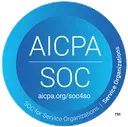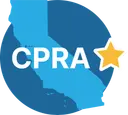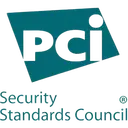In today’s rapidly evolving business landscape, compliance isn’t just a legal necessity; it’s a critical component of operational success. For organizations navigating complex regulatory environments, a Compliance Management System (CMS) is an essential tool.
Organizations utilize a compliance management system (CMS) to ensure adherence to laws and regulations, thereby mitigating legal risks and enhancing operational efficiency. At its core, a CMS is designed to prevent and detect violations, providing a safeguard against potential legal issues and reputational damage.
By systematically managing compliance with their own compliance management program, organizations can maintain integrity and trust while mitigating the risk of costly non-compliance penalties.
Key takeaways
- A Compliance Management System (CMS) ensures adherence to regulatory requirements and integrates compliance into daily operations, fostering a proactive compliance culture within organizations.
- Implementing a CMS provides critical benefits, such as minimizing legal penalties, enhancing organizational reputation, and increasing operational efficiency through the automation of compliance-related tasks.
- Key components of an effective CMS include board and management oversight, detailed compliance programs with policies, procedures, and regular risk assessments, along with robust monitoring and auditing processes.
What is a compliance management system (CMS)?
With regulations becoming increasingly complex, businesses face mounting pressure to stay compliant. The cost of non-compliance is staggering, ranging from hefty fines to legal action and significant damage to a company’s reputation. This growing challenge is driving the adoption of more sophisticated compliance management systems.
A Compliance Management System (CMS) is a cohesive framework designed to ensure that an organization adheres to internal policies, regulatory requirements, and industry benchmarks. By integrating compliance into daily operations, a compliance system fosters a proactive compliance culture within organizations.
The objectives of implementing a CMS are threefold:
- To create a comprehensive method for managing compliance through the unification of disparate elements, workflows, and supervisory measures.
- To enable entities to optimize outcomes while reducing exposure to risks
- To promote operational efficiency within an organizational setting.
Incorporating effective compliance management is crucial as it significantly influences corporate success, helps organizations navigate adverse conditions, and contributes to conformity with legal obligations.
Without an effective, organized CMS in place, organizations may find themselves incapable of maintaining proper compliance, which can result in significant legal ramifications, hazards pertaining to operations, and reputational challenges.
Five key components of compliance management systems
An effective CMS is more than just a checklist of regulatory requirements. It is a dynamic system with several key features:
1. Automated monitoring and reporting
Automated monitoring and reporting are essential features of an effective CMS. Real-time tracking of compliance status helps organizations stay ahead of potential issues, ensuring that any deviations are promptly identified and addressed.
This type of automation reduces the need for manual oversight, allowing compliance teams to focus on more strategic tasks. Additionally, automated reporting provides a comprehensive view of compliance activities, making it easier to demonstrate adherence to regulatory requirements during audits.
2. Document management
Document management is a cornerstone of any robust CMS. Centralized storage ensures easy access and management of compliance-related documents, reducing the risk of misplaced or outdated information.
This feature allows organizations to maintain an organized repository of policies, procedures, and records, facilitating quick retrieval when needed. Effective document management also supports version control, ensuring that employees always have access to the most current and relevant information.
3. Risk assessment tools
Larger organizations need to expand the scope of their compliance programs to include risk, in which case it becomes more of a GRC (governance, risk, and compliance) solution. Risk assessment tools are vital for proactively identifying and mitigating risks before they escalate. These tools enable organizations to evaluate potential compliance threats and develop strategies to address them.
By continuously monitoring and assessing risks, companies can implement preventive measures that minimize the likelihood of regulatory breaches. This proactive approach not only protects the organization from legal penalties but also enhances its overall risk management framework.
4. Training and education
Training and education are crucial components of a CMS, keeping employees informed about compliance requirements. Regular training sessions ensure that staff members understand their roles and responsibilities in maintaining compliance.
This ongoing education helps to instill a culture of compliance within the organization, reducing the risk of inadvertent violations. By investing in continuous learning, companies can ensure that their workforce remains knowledgeable about evolving regulatory landscapes.
5. Audit trail
Maintaining a transparent audit trail is essential for both internal and external audits. An audit trail provides a detailed record of compliance activities, making it easier to track actions and decisions.
This transparency is crucial for demonstrating compliance to regulators and stakeholders. An effective audit trail also aids in identifying areas for improvement, allowing organizations to refine their compliance processes continuously.
These features work together to create a robust framework that not only ensures compliance but also drives operational efficiency.
Benefits of implementing a compliance management system
Establishing a compliance management system (CMS) brings numerous advantages, including decreased legal risks, improved reputation, and enhanced operational efficiency. This system actively manages and mitigates compliance risks to avoid significant financial repercussions while promoting consistent decision-making through clear guidelines.
Automating monotonous tasks involved in compliance processes, such as task scheduling, regulatory monitoring efforts, and oversight of authorizations and reminders, can greatly optimize them. Such automation minimizes human error within the crucial elements of managing compliance.
Risk mitigation
The proactive approach to compliance supercharges effective risk mitigation. By continuously monitoring compliance activities and conducting regular risk assessments, a CMS helps identify potential issues before they escalate into significant problems. This foresight allows organizations to address vulnerabilities promptly, thereby reducing the likelihood of regulatory breaches and associated penalties.
Implementing a CMS ensures that compliance is not just a reactive process but an integral part of the organization’s strategy. By integrating risk management into daily operations, companies can anticipate and mitigate risks more effectively. This proactive stance not only protects the organization from legal repercussions but also enhances its overall resilience and operational stability. In essence, a well-implemented CMS acts as a safeguard, ensuring that potential compliance issues are identified and managed before they can adversely impact the organization.
Avoid legal penalties and reputational damage
Establishing a robust compliance management system can reduce the likelihood of incurring substantial fines and sanctions, thereby protecting their profitability. It is crucial to prioritize the development of an effective CMS to stave off possible financial threats.
Such a system is indispensable for any organization aiming to escape repercussions like hefty fines, interruptions in operations, and heightened susceptibility to data breaches. A properly implemented CMS allows businesses to gain clarity on their compliance obligations and ensure that they are integrated within business processes.
A CMS facilitates adherence by companies to pertinent laws and regulations, diminishing the prospects of penalties and disciplinary actions. Taking proactive measures with an efficient compliance management system helps prevent potential legal consequences and reputational damage. Inadequate compliance, especially relating to privacy and security mandates, could lead not only to monetary fines amounting to millions but also inflict significant damage on an organization’s standing in its respective industry.
Increase operational efficiency
A CMS enhances operational efficiency by automating tasks related to compliance, thereby simplifying and expediting compliance processes. It improves communication and the management of tasks through the unification of compliance information, leading to increased overall effectiveness.
Switching from manual compliance handling that relies heavily on physical paperwork and storage—which is both time-consuming and error-prone—to an automated CMS can drastically save time while bolstering precision and uniformity in an organization’s compliance efforts. This shift enables organizations to expand their operations without incurring additional expenses or needing more personnel.
Enhance reputation
Upholding a compliance management system demonstrates ongoing dedication to regulatory compliance, elevating the trust of stakeholders and investors. By ensuring conformity with both legal and industry regulations, an organization’s standing can be significantly improved. Establishing a defined structure in a CMS that allocates roles and responsibilities fosters an environment centered on clarity and accountability.
By prioritizing adherence to compliance standards, businesses signal to customers that their interests (like security and protection of personal data) are paramount, aiding in forging robust customer relationships. The integrity of a well-managed CMS positively influences how the public views the organization, thus protecting its reputation and preserving established trust.
Improved accountability and better decision-making
Clearly defined roles and responsibilities ensure that compliance is a shared organizational priority. By establishing clear lines of accountability, organizations can foster a culture where every member understands their part in maintaining compliance. This shared responsibility helps to embed compliance into the organizational ethos, making it a fundamental aspect of daily operations.
Access to real-time compliance data allows for informed decisions that align with regulatory requirements. When decision-makers have immediate access to up-to-date compliance information, they can make better, more informed choices that support the organization’s regulatory obligations. This not only helps to avoid potential compliance breaches but also enables the organization to respond swiftly and effectively to any emerging risks or changes in the regulatory landscape.
Who is responsible for compliance management?
Compliance is not just a task; it’s a culture. Effective compliance management is a collective responsibility that involves multiple levels of an organization. The success of a Compliance Management System (CMS) depends on the coordinated efforts of various stakeholders, including the Board of Directors, Senior Management, Compliance Officers and Teams, Employees, and even Third Parties.
Board of Directors
The Board of Directors plays a crucial role in overseeing compliance management within an organization. They are responsible for setting the tone at the top, establishing a culture of compliance, and ensuring that adequate resources are allocated to the CMS. The Board is also tasked with approving compliance policies and regularly reviewing the effectiveness of the compliance program.
Senior management team
Senior management is responsible for implementing the compliance strategies set forth by the Board of Directors. They ensure that compliance policies are integrated into the daily operations of the organization. Senior Management also play a key role in communicating the importance of compliance to all employees and fostering an environment where compliance is a priority.
Compliance Officers and teams
Your Chief Compliance Officer and compliance teams are the backbone of a CMS. They are responsible for developing, implementing, and monitoring compliance programs. This includes conducting risk assessments, providing training and education, and ensuring that the organization adheres to all relevant laws and regulations. Compliance Officers also serve as the point of contact for regulatory agencies and are responsible for reporting any compliance issues to Senior Management and the Board of Directors.
Employees
Employees at all levels have a responsibility to adhere to compliance policies and procedures. They are the first line of defense in identifying and reporting potential compliance issues. Regular training and education help employees understand their roles in maintaining compliance and the importance of following established guidelines.
Third parties
Third Parties, such as vendors, suppliers, and contractors, also play a role in compliance management. Organizations must ensure that their third-party partners adhere to the same compliance standards. This can be achieved through due diligence processes, contractual agreements, and ongoing monitoring. Ensuring third-party compliance helps mitigate risks and maintain the integrity of the CMS.
By clearly defining the roles and responsibilities of each stakeholder, organizations can create a robust and effective Compliance Management System that promotes accountability and ensures adherence to regulatory requirements.
The role of technology in compliance management
While compliance responsibility ultimately sits with every employee, going all the way to your Board of Directors, technology plays a pivotal role in the realm of compliance management. There are numerous benefits to employing software in the compliance management process, including:
- Centralization of data pertinent to compliance
- Increased efficiency through automation of tasks
- Refinement and precision enhancement in procedural execution
- Continuous surveillance over risks associated with compliance and assessment of performance metrics
- Production capabilities for detailed reports as well as rigorous audits
- Decrease in errors attributed to human factors via automated workflows
- Regulation over workflow operations including permission granting, notifications, and escalation procedures
- Assurance is provided for consistent application throughout all facets involved in managing adherence
The deployment of specialized software markedly enhances practices concerning the upkeep of conformity.
An effective compliance management system with Thoropass
Thoropass offers a comprehensive solution for managing compliance through a blend of advanced technology and subject matter expertise. Leveraging the power of AI, Thoropass’s solution can analyze vast amounts of compliance data to help you complete DDQs, automate evidence collection, and centralize your source of truth to better enable you to identify trends and forecast your compliance strategy with high accuracy. Our in-house expertise ensures you’re always in the know on upcoming legislative changes and other factors that may impact your business. This predictive capability ensures that organizations stay ahead of regulatory shifts, maintaining compliance proactively rather than reactively.
The integration of technology and expert knowledge allows for a seamless compliance management experience. The platform’s AI-driven tools provide actionable insights, while its team of compliance experts ensures that these insights are grounded in real-world regulatory requirements. This marriage of technology and expertise streamlines the compliance process, making it more efficient and effective.
Thoropass also accelerates audits through frictionless automation. By automating routine compliance tasks, the platform reduces the manual effort required, allowing compliance teams to focus on more strategic activities. This automation not only speeds up the audit process but also improves accuracy, reducing the risk of human error.
Continuous monitoring is another key feature of Thoropass. Our platform provides continuous monitoring and tracking of compliance status, ensuring that any deviations are promptly identified and addressed. This continuous compliance monitoring helps organizations maintain a constant state of readiness for audits and regulatory reviews.
Finally, Thoropass excels in its ability to integrate with existing systems. Whether it’s document management, risk assessment tools, or training platforms, Thoropass can seamlessly connect with other software solutions, creating a unified compliance ecosystem. This integration capability ensures that all compliance-related activities are harmonized, enhancing overall operational efficiency.
By leveraging compliance software like Thoropass, companies can ensure that they not only meet but exceed regulatory requirements, all while optimizing their compliance processes for greater effectiveness and efficiency. Watch a demo here.
Conclusion: A robust and functional CMS is just good sense
Establishing a robust and functional compliance management system is critical for organizations to effectively manage their adherence to regulatory demands and industry benchmarks. By weaving together an array of mechanisms and controls within the CMS, entities can maintain regulatory conformity, curb potential dangers, and boost overall efficiency.
Realizing the advantages of such a system extend beyond simply steering clear of legal sanctions; it also promotes reputational enhancement while bolstering operational effectiveness. Getting the most out of your CMS requires ongoing education programs for staff members plus a sustained commitment from leadership levels—all supplemented by advanced compliance management software. Working together, these strategies allow companies to cultivate an adaptive CMS marked by resilience against present and future challenges.
More FAQs
What is a Compliance Management System (CMS)?
Organizations utilize a Compliance Management System (CMS), which is a cohesive management system designed to ensure adherence to internal policies, regulatory requirements, and industry benchmarks. This system aims at enhancing operational effectiveness while simultaneously minimizing risk exposure.
Why are policies and procedures important in a CMS?
Procedures and policies play a crucial role within a Compliance Management System (CMS) by establishing benchmarks for mitigating compliance risks, as well as assuring that efforts towards compliance are comprehensible, actionable, and subject to enforcement.
How does a CMS help avoid legal penalties?
Organizations utilize a Compliance Management System (CMS) to ensure adherence to relevant laws and regulations, thereby proactively managing and mitigating compliance risks. This is essential for avoiding significant fines or other punitive measures that could arise from non-compliance, helping maintain legal conformity, and protecting against potential financial and reputational harm.
What role does technology play in compliance management?
In compliance management, technology is essential for automating tasks, consolidating data for ease of access and analysis, increasing operational efficiency, and offering analytics-based insights. It harnesses sophisticated technologies such as artificial intelligence (AI) and machine learning (ML) for continuous monitoring and to collect data to help you forecast upcoming trends. Our team of experts is always at the forefront of evolving regulations and enhancing the platform’s automation to help you sharpen your compliance procedures.
What are some common challenges in implementing a CMS?
Implementing a CMS can be challenging due to managing manual processes, which are costly and inefficient, and preparing for client or security certification audits, which demand time and resources. This is a valuable insight for anyone navigating CMS implementation.
Book a Demo
Discover the world’s favorite compliance automation software
There’s a reason Thoropass was named an Industry leader on G2. Book a demo and see it for yourself.

Related Posts
Stay connected
Subscribe to receive new blog articles and updates from Thoropass in your inbox.
Want to join our team?
Help Thoropass ensure that compliance never gets in the way of innovation.















.png)